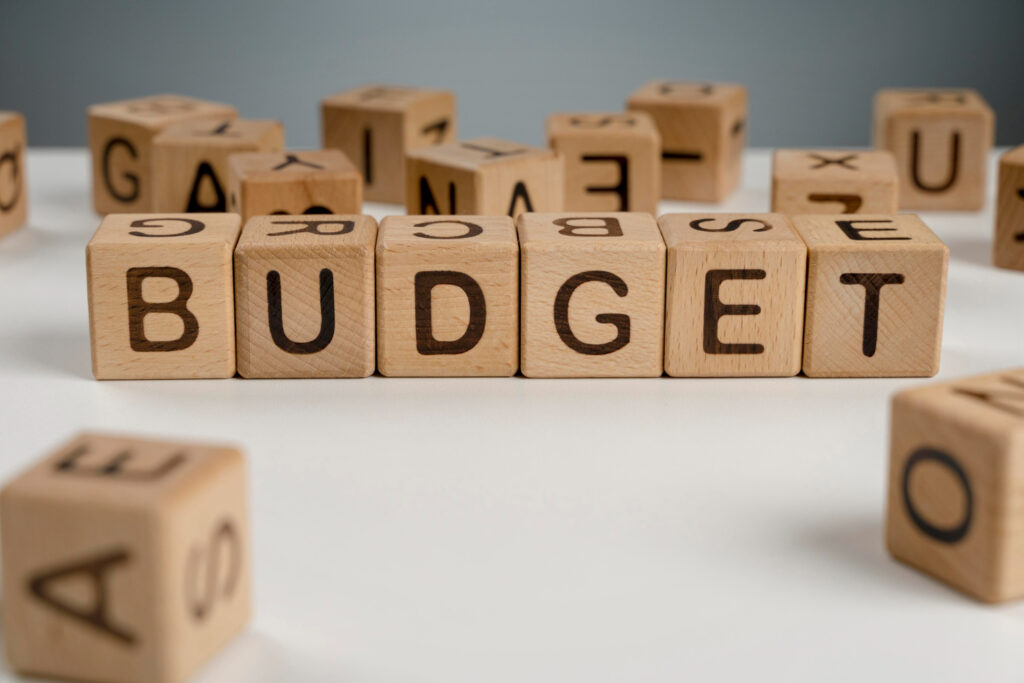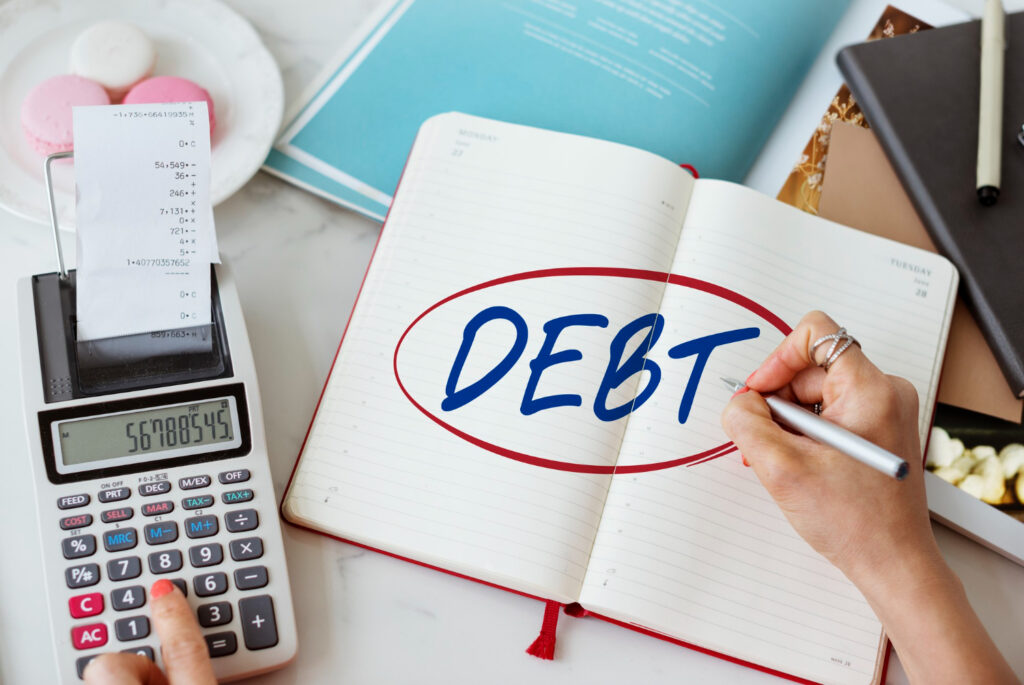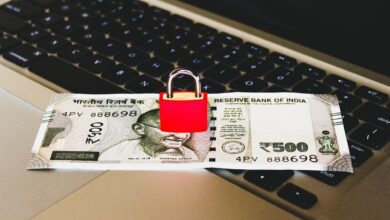10 Bad Financial Habits That Are Secretly Destroying Your Wealth (And How To Fix Them)

Let’s get real for a second. You work hard, pay your bills (mostly on time), and still feel like you’re running on a financial hamster wheel. Sound familiar? Here’s the truth: your money problems probably aren’t about your income. They’re about those sneaky bad financial habits you’ve been dragging around like old baggage.
I’ve been there. Years ago, I thought I was doing “okay” with money until I realized my “okay” meant living paycheck to paycheck with zero savings and a credit card balance that made me sweat.
The wake-up call? Understanding that small money mistakes compound into massive financial disasters over time.
This isn’t another boring finance lecture. Think of this as your friend pulling you aside to say, “Hey, we need to talk about your money situation.” Because honestly? Breaking these bad financial habits might be the difference between retiring comfortably and working until you’re 80.
What Are Bad Financial Habits?
Bad financial habits are those money decisions you make on autopilot that quietly sabotage your financial future. They’re the financial equivalent of eating fast food every day. Sure, one burger won’t kill you, but make it a daily thing and you’ve got problems.
Here’s what makes these habits so dangerous: they don’t feel catastrophic in the moment. Skipping one month of savings? No biggie. Ignoring your budget again? You’ll start next month. Using your credit card for that “small” purchase? You’ll pay it off soon.
But these tiny choices stack up. Before you know it, you’re drowning in debt, have zero emergency savings, and your retirement plan is basically “hope for the best.”
The consequences can range from constant financial stress to serious issues like foreclosure, bankruptcy, or working well past retirement age.
Common examples include impulse shopping (guilty as charged!), living without a budget, avoiding your bank statements like they’re ex-texts, and treating credit cards like free money. Ring any bells?
How Do You Break Bad Financial Habits?
Breaking bad financial habits starts with something most people hate: admitting you have a problem. I know, I know. It’s uncomfortable to look at your bank account and acknowledge that your spending is out of control or that you’ve been financially winging it for years.
But here’s the good news. Once you admit the problem exists, you’ve already done the hardest part.
The next step is swapping each bad habit for a good one. Think of it like replacing your afternoon candy bar with an apple. (Okay, bad example. Who actually wants an apple? But you get the idea.)
For instance, if you’re an impulse buyer, start using shopping lists and the 48-hour rule. See something you want? Wait two days before buying it. You’d be shocked how often that “must-have” item suddenly becomes a “meh, I don’t need that.”
If saving feels impossible, automate it. Set up automatic transfers to a high-yield savings account right after payday. When the money disappears before you can spend it, saving becomes effortless.
The key is making the good choice easier than the bad one. Remove temptation, create systems, and give yourself some grace when you mess up (because you will, and that’s totally normal).
10 Bad Financial Habits You Need To Break
Alright, let’s get into the nitty-gritty. These are the money mistakes that are probably holding you back right now. Don’t worry, I’m not here to judge. I’ve made most of these mistakes myself. 🙂
1. Not Having Savings Goals

Ever wonder why your savings account has been stuck at $47 for the past six months? It’s because you haven’t given yourself a reason to save. Without a target, saving money feels pointless, like running on a treadmill going nowhere.
I used to think I’d “just save whatever’s left” at the end of the month. Guess what was left? Nothing. Zilch. There was always another expense, another “emergency,” another reason why this month wasn’t the right time to save.
The fix is simple but powerful: create specific savings goals. And I mean specific. Not “save for retirement” but “save $500 per month to reach $100,000 in my retirement account by age 45.” Not “save for vacation” but “save $200 monthly for a $2,400 trip to Japan next October.”
Break your goals into short-term (emergency fund, new laptop, holiday gifts) and long-term (retirement, house down payment, kids’ college fund). Then calculate exactly how much you need to save monthly to hit each goal. Suddenly, saving has a purpose, and you’ll actually do it.
2. Having No Monthly Budget

Not having a budget is like trying to build furniture without instructions. Sure, you might end up with something that vaguely resembles a chair, but it’s probably wobbly and definitely not what you intended.
A budget isn’t about restriction (though that’s what everyone thinks). It’s about telling your money where to go instead of wondering where it went. Without one, you’re flying blind, spending on whatever catches your eye, and then panicking when rent is due.
There are tons of budgeting methods out there. The 50/30/20 rule splits your income into 50% needs, 30% wants, and 20% savings. The pay-yourself-first method prioritizes savings before anything else. But IMO, the zero-based budget is the MVP.
With zero-based budgeting, every single dollar gets assigned a job. Your income minus all your expenses (including savings and fun money) should equal zero. Nothing falls through the cracks. You’re intentional with every penny, which means no more “where did my money go?” moments.
Start simple. Track your spending for a month to see where your money actually goes (prepare to be shocked). Then create categories for next month and assign dollar amounts. Adjust as you go. It’ll feel weird at first, but stick with it.
3. Spending Too Much On Nonessentials
Let’s talk about the latte factor. Not actual lattes (though those count too), but all those small nonessential purchases that seem harmless but add up to a financial leak in your budget.
That streaming service you forgot you had? $15. Daily coffee shop visit? $150/month. Impulse Amazon purchases? Don’t even get me started. Separately, these expenses feel tiny. Together, they’re the reason you can’t save money.
I’m not saying you should live like a monk and never enjoy anything. But you need to be intentional. Ask yourself: does this purchase move me closer to my goals or further away? Is this something I genuinely value, or am I just spending because I’m bored?
Here’s a trick that’s saved me thousands: the write-it-down method. When you’re tempted to buy something nonessential, write it down and wait 48-72 hours.
If you still want it after that waiting period, go ahead. Most of the time? You’ll forget about it entirely.
The money you save from cutting unnecessary spending can go straight to your goals. Imagine redirecting $200/month from random purchases to your emergency fund. That’s $2,400 per year.
In five years, you’d have $12,000 saved, plus interest. Not bad for skipping stuff you didn’t really need anyway.
4. Piling Up Debt

According to recent data, the average American household carries over $100,000 in debt when you factor in mortgages, credit cards, student loans, car payments, and other obligations. That number should terrify you.
Debt is like quicksand. The more you struggle without a plan, the deeper you sink. And one of the worst bad financial habits is simply accepting debt as “normal” and continuing to add more instead of aggressively paying it down.
Here’s the brutal truth: every dollar you pay in interest is a dollar that can’t work toward your future. That $50 monthly credit card interest payment? Over 20 years, that’s $12,000 gone. Poof. Money you’ll never see again.
The first step to escaping debt is to stop digging the hole deeper. No new debt. Period. I don’t care if there’s a sale. I don’t care if your friend is getting the new iPhone. No. New. Debt.
Next, choose a debt payoff strategy. The debt avalanche method tackles high-interest debt first, saving you the most money mathematically. The debt snowball method pays off the smallest balances first, giving you psychological wins that keep you motivated.
Personally, I’m team snowball. Yeah, you might pay a bit more in interest, but the momentum from eliminating entire debts keeps you fired up. Pick whichever method you’ll actually stick with, then attack that debt like your financial life depends on it (because it does).
5. Having No Emergency Fund

Pop quiz: What would you do if your car needed a $1,200 repair tomorrow? Or if you lost your job next week? If your answer involves credit cards or loans, we’ve got a problem.
Not having an emergency fund is one of those bad financial habits that doesn’t seem urgent until disaster strikes. Then suddenly you’re scrambling, going into debt, and making your financial situation ten times worse.
Life happens. Cars break down. People get sick. Companies downsize. The pandemic taught us that “secure” jobs can disappear overnight. Without an emergency fund, any unexpected expense becomes a full-blown crisis.
Financial experts recommend saving 3-6 months of expenses in an easily accessible account. If that sounds impossible, start smaller. Even $500 can prevent most minor emergencies from becoming debt-inducing catastrophes.
Here’s how to build your fund painlessly: treat it like a bill. Budget a specific amount each month for your emergency fund and transfer it automatically on payday. Start with whatever you can manage, even if it’s just $25. Something is infinitely better than nothing.
Keep this money separate from your regular checking account (so you’re not tempted to “borrow” from it) but easily accessible when you need it. A high-yield savings account is perfect. You’ll earn a bit of interest while keeping the money liquid for actual emergencies.
6. Using Out-Of-Network ATMs
This one seems petty, but hear me out. Those $3-5 ATM fees add up faster than you think. Use out-of-network ATMs twice a week? That’s $400-500 per year. For the privilege of accessing your own money. Ridiculous, right?
I used to think ATM fees were just “the cost of convenience.” Then I calculated how much I’d spent in a year and nearly choked. That money could’ve been a nice weekend getaway or a chunk of my emergency fund.
The fix is stupid simple: use in-network ATMs. Your bank’s website or app has a locator tool showing you where fee-free ATMs are. Plan ahead. Get cash when you’re near one instead of grabbing it wherever’s convenient.
Better yet, switch to a bank that reimburses ATM fees. Several online banks and credit unions offer this perk. Suddenly, every ATM becomes “in-network.” Problem solved.
Or go even simpler: use your debit card for purchases instead of cash. Most places accept cards now, and you’ll avoid ATM fees entirely. Just make sure you’re tracking your spending so you don’t overspend (which brings us back to that budget we talked about).
7. Relying On Cash Advances
Cash advances feel like a lifeline when you’re desperate. But they’re actually a trap disguised as help. The fees are outrageous, the interest rates are predatory, and they create a cycle that’s incredibly hard to break.
Taking a cash advance occasionally in a true emergency? Okay, life happens. But relying on them regularly means your budget is fundamentally broken. You’re consistently spending more than you earn, and that’s unsustainable.
The real issue isn’t that you need more money right now. It’s that you need to either increase your income or decrease your expenses (or both). Cash advances are a band-aid on a bullet wound.
Instead of reaching for that advance, look at increasing your income. Can you pick up overtime? Start a side hustle? Sell stuff you don’t need? Even an extra $300-500/month can completely change your financial situation.
Simultaneously, cut your expenses. I know you’ve heard this before, but actually do it this time. Review every single expense. Cancel subscriptions you don’t use. Cook at home. Find cheaper alternatives. Live below your means, not at or above them.
It’s uncomfortable. It requires sacrifice. But it’s temporary. Once you break the cash advance cycle and build some breathing room in your budget, you’ll wonder how you ever lived paycheck to paycheck.
8. Incurring Late Payment Fees
Late payment fees seem like no big deal. $25-35 here and there, right? Wrong. If you’re paying late fees on multiple accounts several times a year, you’re literally throwing away hundreds of dollars for no reason.
Plus, late payments don’t just cost you fees. They tank your credit score, which means you’ll pay higher interest rates on everything from credit cards to mortgages. That “small” late payment habit could cost you tens of thousands over your lifetime.
I used to pay bills late all the time. Not because I didn’t have the money, but because I’d forget or procrastinate. It was costing me money and stress, and it was completely preventable.
The solution is automation. Set up automatic payments for every recurring bill. Your credit card, utilities, subscriptions, everything. The payment happens whether you remember or not.
Worried about overdrafts? Set up autopay for the minimum payment, then manually pay extra when you can. Or schedule payments for right after payday when you know money’s in your account. Just automate something so you’re never late.
Your credit score will thank you. Your stress levels will thank you. And your wallet will definitely thank you when you’re not hemorrhaging money on avoidable fees.
9. Borrowing For Big Expenses
Want to know a secret about wealthy people? They plan for big expenses instead of borrowing for them. Shocking, I know. But this habit alone separates people who build wealth from people who stay broke.
When you borrow money for a wedding, vacation, home renovation, or other big purchase, you’re paying for that thing twice. Once for the actual cost, and again in interest. You’re literally making everything more expensive for yourself.
Big expenses should be treated as savings goals, not emergencies. If you know you want to renovate your kitchen in two years, start saving now. Put aside money monthly so when the time comes, you can pay cash.
“But that takes forever!” Yeah, it does. Know what else takes forever? Paying off a $15,000 personal loan at 12% interest. Except the loan also costs you an extra $2,000+ in interest and stresses you out for years.
Start planning ahead for everything. Holidays, birthdays, car maintenance, home repairs. Create sinking funds (mini savings accounts) for each category and contribute regularly. When the expense arrives, you’re ready.
This requires patience and discipline. But it’s the difference between being in control of your money and your money controlling you. Choose wisely.
10. Spending On FOMO Offers
Social media and online shopping have weaponized FOMO (Fear Of Missing Out) against your wallet. Limited-time offers! Flash sales! Only 3 left in stock! Act now or regret it forever!
Marketers are playing psychological games with your brain, and they’re winning. That urgent feeling you get when you see “SALE ENDS TONIGHT”? That’s intentional manipulation designed to bypass your rational thinking.
I’ve fallen for this trap more times than I can count. Bought stuff I didn’t need because the deal seemed too good to pass up. Spoiler alert: there’s always another sale. Always. That “once in a lifetime” offer will be back next month with a different name.
The fix requires discipline and self-awareness. First, unsubscribe from marketing emails. If you don’t see the offers, you won’t be tempted. Out of sight, out of mind.
Second, limit your social media time, especially on platforms heavy with shopping content. The less you’re exposed to “must-have” products, the less you’ll want to buy.
Third, implement a mandatory waiting period for all non-essential purchases. See something you want? Great. Add it to a list and revisit it in a week. If you still want it and it fits your budget, go for it. Most of the time, the desire will pass.
Remember: FOMO is fake urgency designed to make you spend money you wouldn’t otherwise spend. Don’t let marketing tactics destroy your financial goals.
How To Break Bad Financial Habits

Knowing what you’re doing wrong is only half the battle. Now you need a game plan to actually change. Breaking bad financial habits isn’t easy, but it’s absolutely doable with the right approach.
1. Identify Your Bad Money Habits
You can’t fix what you don’t acknowledge. This step requires brutal honesty and zero excuses. Look at your financial situation and identify exactly what’s going wrong.
Are you in debt? Why? Was it medical bills (understandable) or impulse purchases (fixable)? Is your savings account empty? Is it because you don’t earn enough, or because you spend everything you make?
Pull up your bank statements from the last three months. Review every transaction. Where is your money actually going? You might think you know, but seeing it in black and white is eye-opening (and sometimes horrifying).
Look for patterns. Do you overspend on dining out? Online shopping? Subscriptions you forgot about? Are you paying unnecessary fees? Carrying credit card balances? Not contributing to retirement?
Make a list of every financial habit that’s hurting you. Don’t judge yourself (that comes later, kidding!). Just observe and document. This list becomes your roadmap for change.
2. Write Them Down
There’s something powerful about putting pen to paper. When you write down your bad financial habits, they become real. They’re no longer vague concepts floating in your head. They’re concrete issues that demand attention.
Grab a notebook, open a document, or use a sticky note (I’m a fan of the sticky note on the bathroom mirror approach). List every bad habit you identified. Be specific.
Don’t just write “spend too much.” Write “spend $400/month on dining out when my budget allows $150.” Don’t write “bad at saving.” Write “haven’t contributed to savings in 8 months despite earning enough to save $200/month.”
Next to each bad habit, write the change you want to make and how you’ll do it. For example: “Dining out: Reduce to $150/month by meal planning every Sunday and packing lunch for work.”
Put this list somewhere you’ll see it daily. Your fridge, your desk, your phone wallpaper. Constant visibility keeps your goals front and center, making it harder to slip back into old patterns.
3. Tackle One Habit At A Time
Here’s where most people fail: they try to fix everything at once. They create an elaborate budget, cut all fun spending, start three side hustles, and commit to saving 50% of their income. By week two, they’re overwhelmed and quit.
Change is hard. Changing everything simultaneously is nearly impossible. Instead, pick one habit to focus on first. Just one. Master it before moving to the next.
Start with the habit that will give you the biggest impact or the quickest win. If you’re paying $200/month in late fees, fix that first. If you’re spending $500/month on impulse purchases, tackle that.
Give yourself at least 30 days to work on one habit before adding another. Research suggests it takes anywhere from 21 to 66 days to form a new habit, depending on the complexity. Be patient with yourself.
Track your progress. Check in weekly. Are you improving? Struggling? What’s working? What’s not? Adjust your approach as needed, but keep focusing on that one habit until it becomes automatic.
Once you’ve successfully changed one habit, celebrate (in a budget-friendly way, of course), then move to the next. Slow progress is still progress. You’re building a foundation for lifelong financial health, not running a sprint.
4. Cut Yourself Some Slack
Let’s be real: you’re going to mess up. You’ll have bad days, bad weeks, maybe even bad months. You’ll overspend. You’ll skip budgeting. You’ll make impulsive purchases. You’ll feel like you’re back at square one.
This is normal. Expected, even. Changing deep-rooted habits is hard, and setbacks are part of the process. The difference between people who succeed and people who give up is how they respond to those setbacks.
When you mess up (not if, when), don’t spiral into shame and abandon your goals. Don’t think, “Well, I already blew it, might as well give up.” That’s the habit talking, trying to pull you back.
Instead, acknowledge what happened without judgment. “I overspent this week. That’s okay. I’m human. What can I learn from this? How can I prevent it next time?” Then get back on track immediately.
Progress isn’t linear. You’ll have ups and downs. Some months will be great. Others will be disasters. What matters is the overall trend. Are you better than you were six months ago? That’s success.
Be kind to yourself. You’re unlearning years or even decades of bad financial habits. That doesn’t happen overnight. Give yourself grace, learn from mistakes, and keep moving forward.
5. Develop Good Financial Habits
Breaking bad habits only works if you replace them with good ones. Nature abhors a vacuum, and so does your brain. If you don’t fill the space left by bad habits with positive alternatives, you’ll slide right back.
For every bad habit you eliminate, establish a good habit in its place. Stopped impulse shopping? Replace it with a weekly budget review habit. Stopped relying on cash advances? Replace it with a side hustle income habit.
Start with these foundational good habits: Create and follow a monthly budget. Save automatically every payday. Track your spending daily or weekly. Review your financial goals monthly. Learn something new about personal finance regularly.
Read books, listen to podcasts, follow financial educators (not influencers pushing get-rich-quick schemes). The more you learn, the better decisions you’ll make. Financial literacy is a superpower that compounds over time.
Build systems that make good habits easy and bad habits hard. Want to save more? Automate transfers so saving happens without effort. Want to spend less? Delete shopping apps and remove saved payment info from websites.
Remember, developing good habits takes time. You’re rewiring your brain and changing your relationship with money. Be patient. Celebrate small wins. And trust that consistent small actions lead to massive results over time.
Final Thoughts
Look, I get it. Money stuff is stressful, sometimes boring, and often overwhelming. But here’s the truth: your financial future is being built right now, today, with the choices you’re making.
Those bad financial habits we talked about? They’re not character flaws. They’re just patterns you learned, probably from watching others or from trial and error. The good news is that patterns can be changed.
You don’t need to be perfect. You don’t need to make six figures. You don’t need some complicated investment strategy. You just need to stop doing the things that are hurting you and start doing the things that help you.
Break these bad habits one at a time. Build better systems. Give yourself grace when you stumble. And keep your eyes on the prize: financial stability, less stress, and the freedom to live life on your terms.
Your future self is counting on the decisions you make today. Don’t let them down. You’ve got this.








